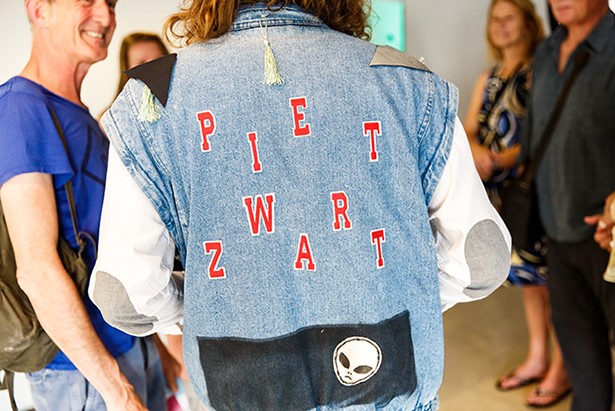
Fotograaf Aad Hoogendoorn
#ASK Petra van der Kooij
For the #ASK section, we ask a number of questions to a fascinating person who is active in the field of art, design & architecture in Rotterdam. The Piet Zwart Institute houses the master’s programs of the Willem de Kooning Academy in Rotterdam. It’s the place where students refine their knowledge about art, design and art education. Petra van der Kooij is the coordinator of the Master of Fine Art at the Piet Zwart Institute and we ask her what it’s like to guide artists during their Master’s degree.
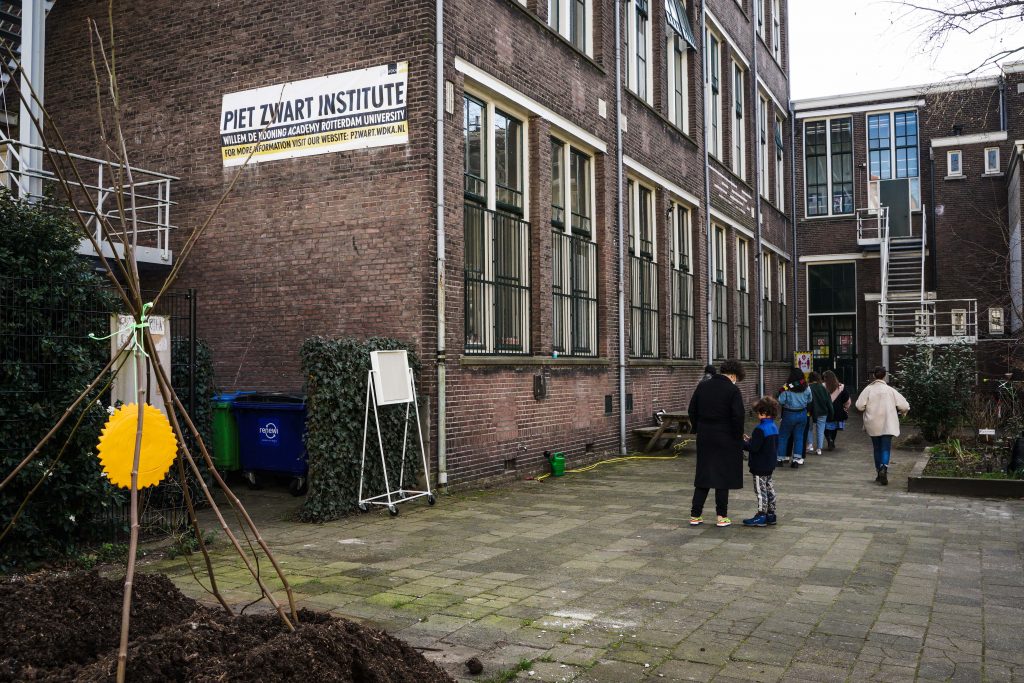
How do you ensure that a student is able to blossom during their master’s? How are they being prepared for the art world and what role do you have in that as an institute? And how do you fulfill your own role there?
Every year, about fifteen students are accepted for the Master of Fine Art and these are often people who already know quite well what direction they are heading in. We can help them to indicate even more precisely what they stand for as an artist. We also offer a professional practice workshop during their two-year training, in which the application of funds and subsidies is central. They also learn how they can stand up for their rights as an artist, for instance when it comes to being reasonably paid for the work you make, instead of it just being a labour of love. Our teaching team consists of international artists and art critics who guide the students through the two-year master’s degree, by means of i.e. studio visits, seminars and group critique sessions. Having their own studio space is very important, a place where they can safely try out things and where they can reflect on their work. We currently have thirteen studios at our location, with extended opening hours.
But our students have had quite a rough time, they started during the pandemic and therefore experienced both the study program and Rotterdam in a completely different way. We have many international students who might not know when they can see their families again. The students also have less social interaction with each other, although fortunately they were allowed to come to their studio at our location. But many classes were (and are currently) taking place online and with that, a certain element is lost. That also influences the art they make. The Piet Zwart Institute entails an intensive process, in which students normally spend a lot of time together, and that is now more difficult. As an institute you have to consider: how do you respond to that? How can we support them and meet their individual needs? But this situation also offers opportunities. For example, students can now receive a guest lecture from an artist on the other side of the world, from someone we would not have been able to invite in a normal situation.
But because you see each other less in a face to face way, you occasionally have to ask more questions in order to find out how students are doing. For example, there are things that come to the fore more quickly when you speak to them in a casual way in the hallway. They may feel a barrier when it comes to sending an email about it. You also know from experience which moments are the most difficult and you anticipate accordingly. For example, when they have just started or just around the time of graduation. Then they have questions about the future and what they will do after they graduate. A two-year study course may sound like a long time, but it is over before you know it. Moreover, our international students (about 90% of the total) are often far from the people they love and there is a lot to be arranged in the Netherlands after their arrival. You want to ensure that all the main conditions are taken care of. It also helps that I don’t grade or assess their work, which makes it easier for them to talk to me, sometimes over a cup of tea. They appreciate that. I am the first person they have contact with when they are hired and quickly become a familiar face. I listen to them and sometimes such a conversation can lead to practical solutions, like an adapted timetable if a student is having a hard time.
What do you find the most challenging and rewarding aspect of your job? What gives you the most energy?
It is really special to see how everyone develops; some earlier than others, all of them with different characters and ways of working. I feel that it’s important to create a place together where they feel safe and where they can develop freely. Where they can make work that they are proud of. Above all, you want them to have a good experience, in an atmosphere in which everyone can discuss anything. The end result gives me energy, when you see the beautiful projects that they make. Art has the potential to make us look at the world in a different way and artists can really surprise us, which is rare. But I also get a boost of energy when I see that people are happy with the studio they have our building, or when we manage to attract an interesting guest speaker.
How would you describe your relationship with the city of Rotterdam?
I was born in Schiedam, but I feel like a Rotterdammer. I completed part of my studies here and a part in Leiden. I always say: I wouldn’t want to live anywhere else in the Netherlands. The city is big enough to count as a metropolis, but small enough that you can easily travel the distance from North to South. There is always something new to discover, there is always something happening and the city is constantly reinventing itself. Not always in a positive way, but it’s never boring. There is a lot of space for events and the city has a number of beautiful museums, but there are also a lot of possibilities for small foundations and artists. You see that many students stick around after their studies. Many find a studio or workplace here or start their own space. That says something about Rotterdam, that that is possible. Hopefully it stays that way!
What are you most looking forward to during Rotterdam Art Week?
I am very curious about the Alexandra Phillips exhibition, as part of Brutus. She has provided an online guest lesson for us and I feel that it would be nice to be able to view her work in real life. I also look forward to visiting PB3, to see an exhibition with work by alumni from Willem de Kooning and Piet Zwart.
Magazine
Rotterdam Art Week 2022 Review
retrospect Rotterdam Art Week 2022
...
Read more

Sculpture Park: New part of Art Rotterdam emphasizes ties with the city
Rotterdam has an internationally unique collection of more than 50 large public works of art...
Read more

#ASK: Marten van Middelkoop & Joost Dingemans from Plasticiet
Plastic has a reputation problem, in part because many people tend to think of organic...
Read more
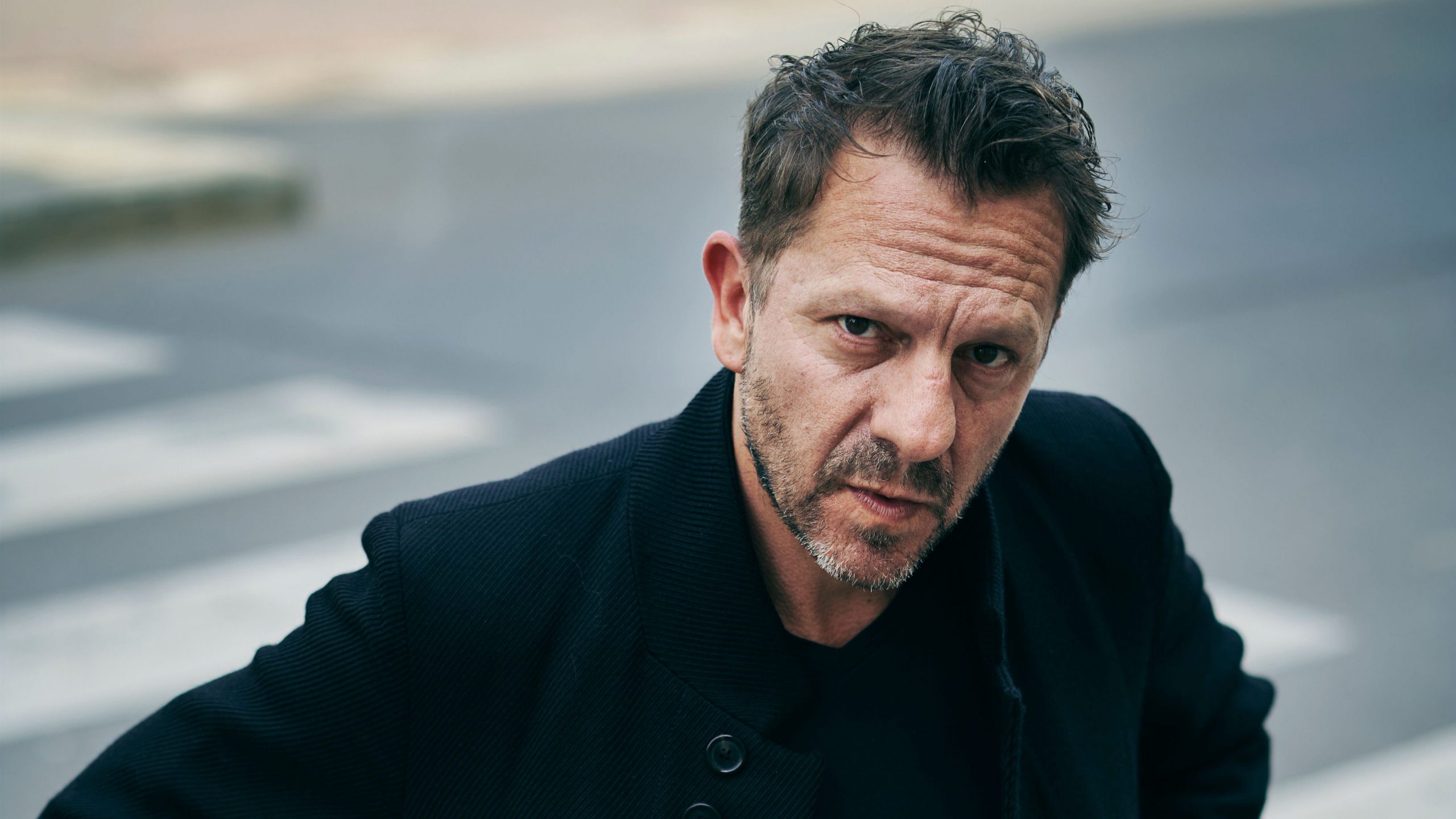
#ASK: Tom Barman
On Tuesday 17 May at 17.00, an exciting solo exhibition will open by the Belgian musician, director and photographer Tom Barman. The opening will also mark the official opening of...
Read more
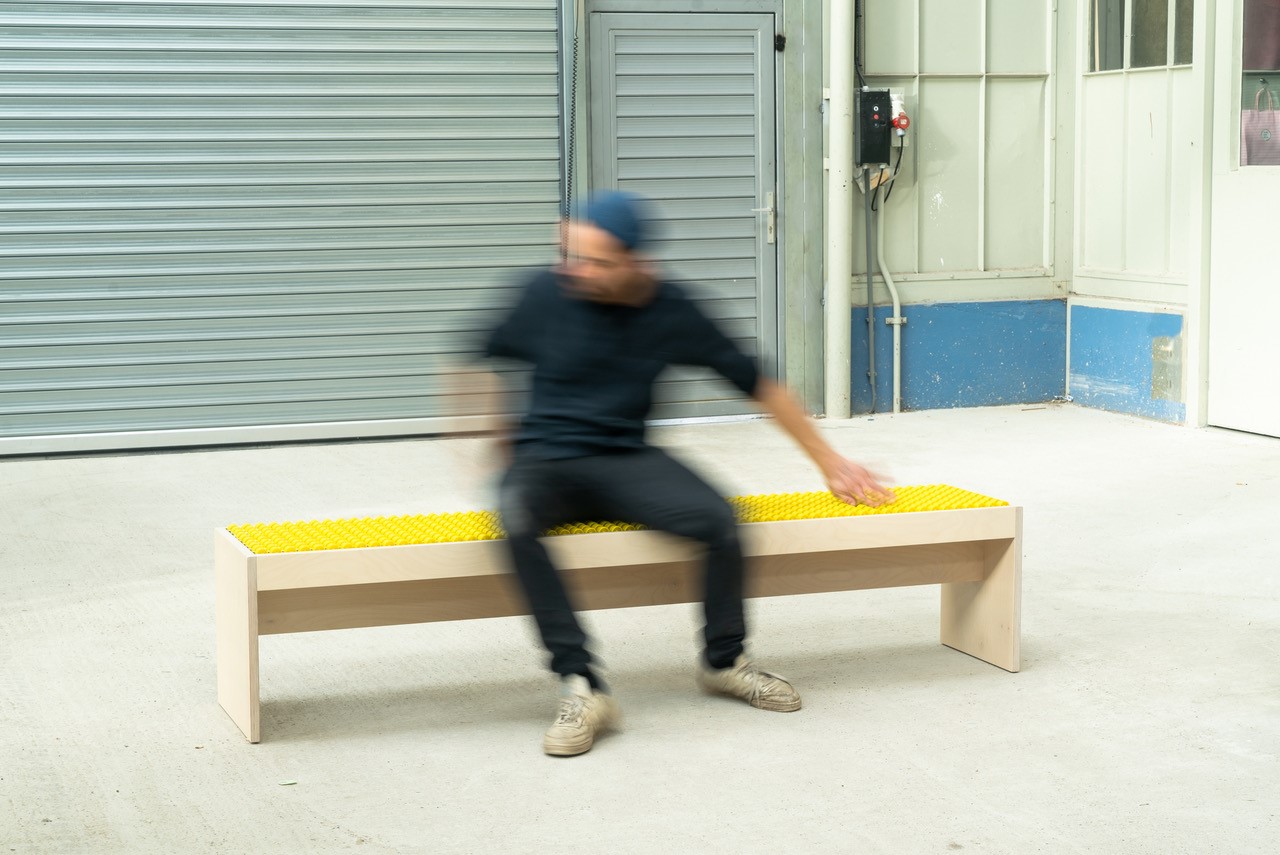
#ASK: Johannes Langkamp
You may have already spotted the innovative work of the German artist Johannes Langkamp in the new exhibition 'Art is the Antidote' in Museum Voorlinden. Or in the new depot of Museum...
Read more
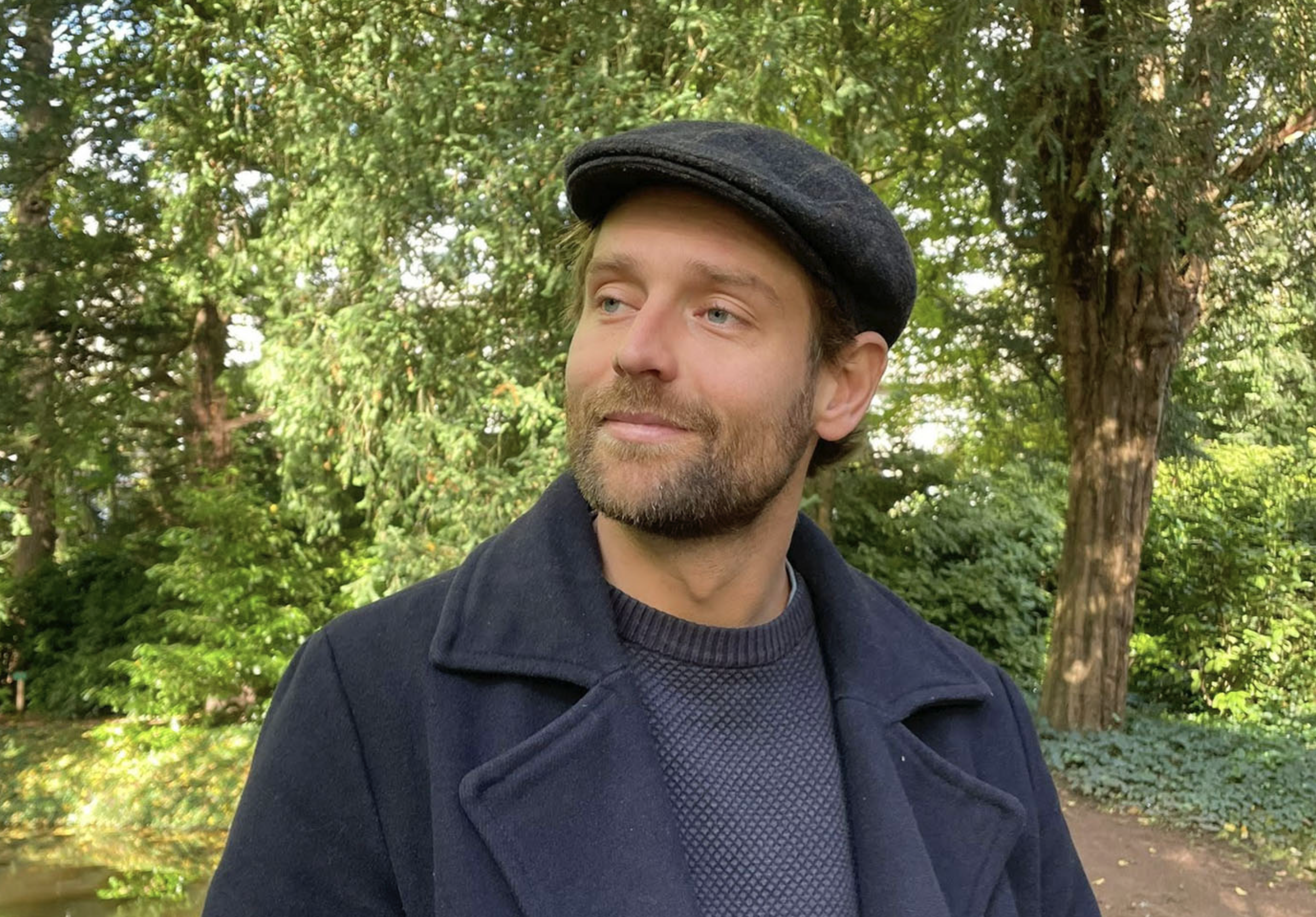
#Ask: Fela Donker of the Kunstenaarsbal
Are you ready for a unique party in which visual art, photography, performance, theatre, audiovisual art and music come together? At the Kunstenaarsbal in De Doelen you get a chance...
Read more

Featured: M4H during Rotterdam Art Week
During Rotterdam Art Week, you should definitely explore the dynamic Merwe Vierhavens area, which owes its name to the four ports that are located in this neighbourhood. Besides classics like...
Read more
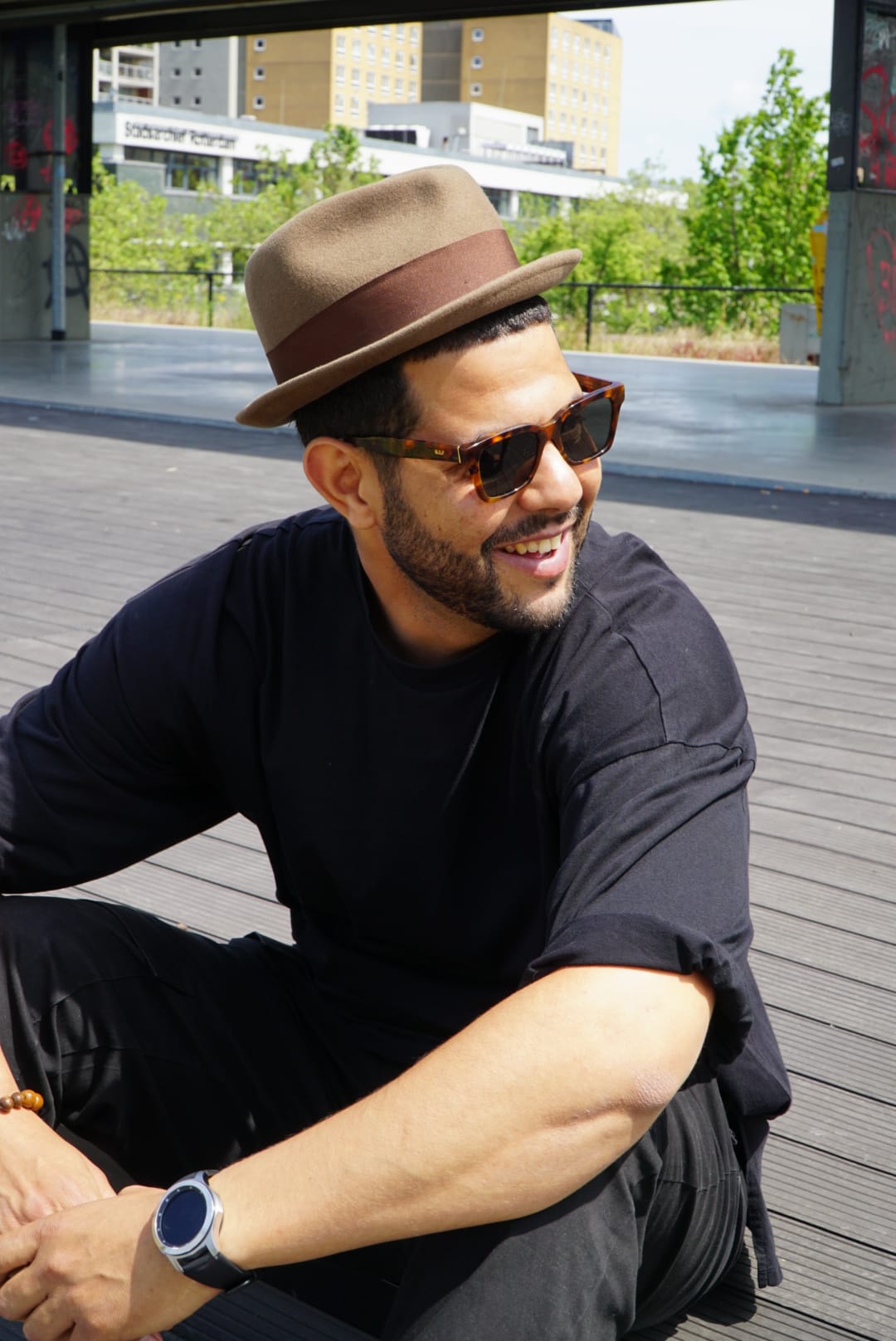
#ASK: Houcem Bellakoud
On 21 and 22 May, Unity in Diversity (UID) will present the Art Market, in...
Read more
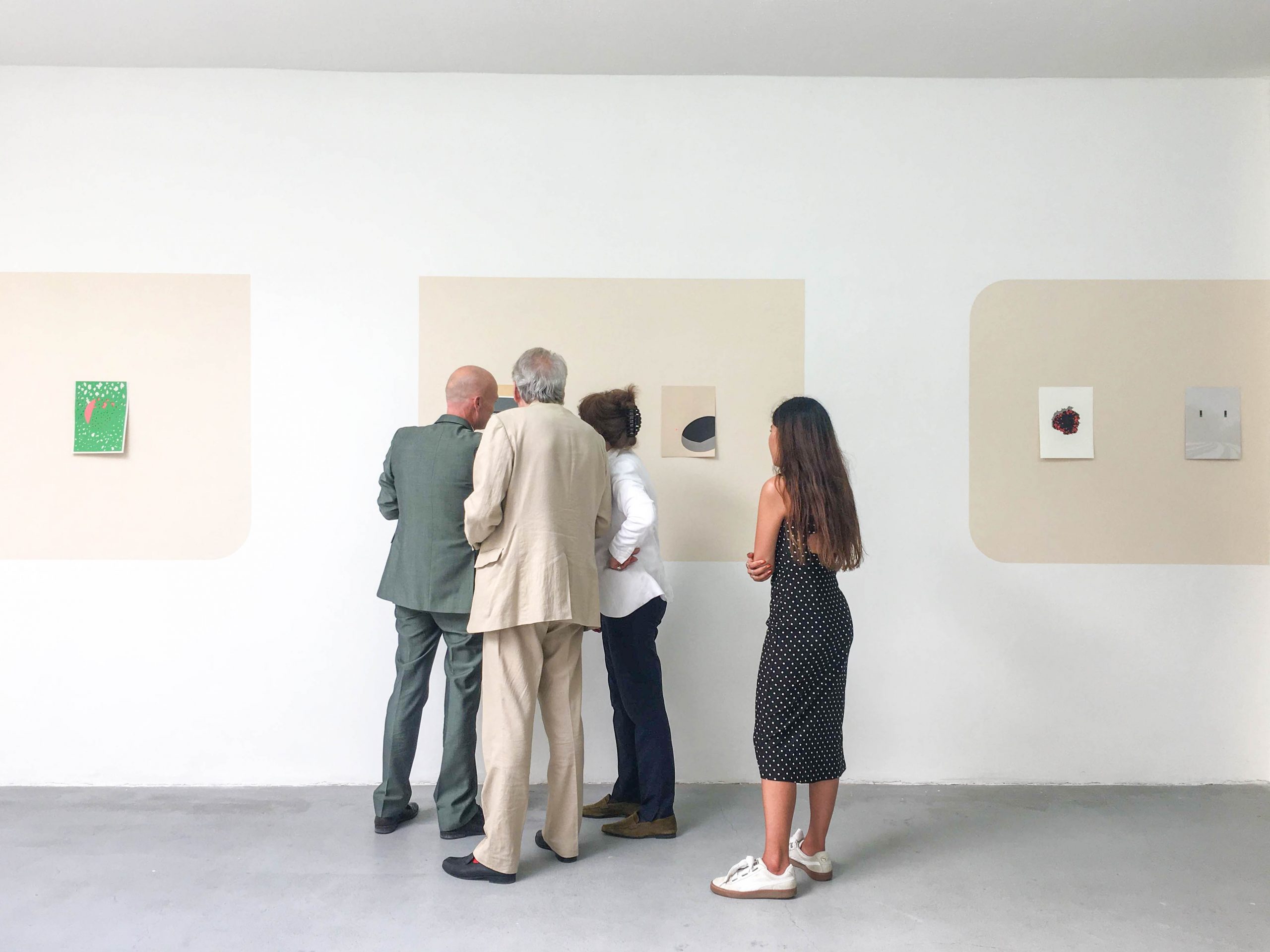
#ASK: Erika Vati from Art Index Rotterdam & tour partner Anne-Marie Ros
Of course, you two are insiders when it comes to art, culture and design in...
Read more




